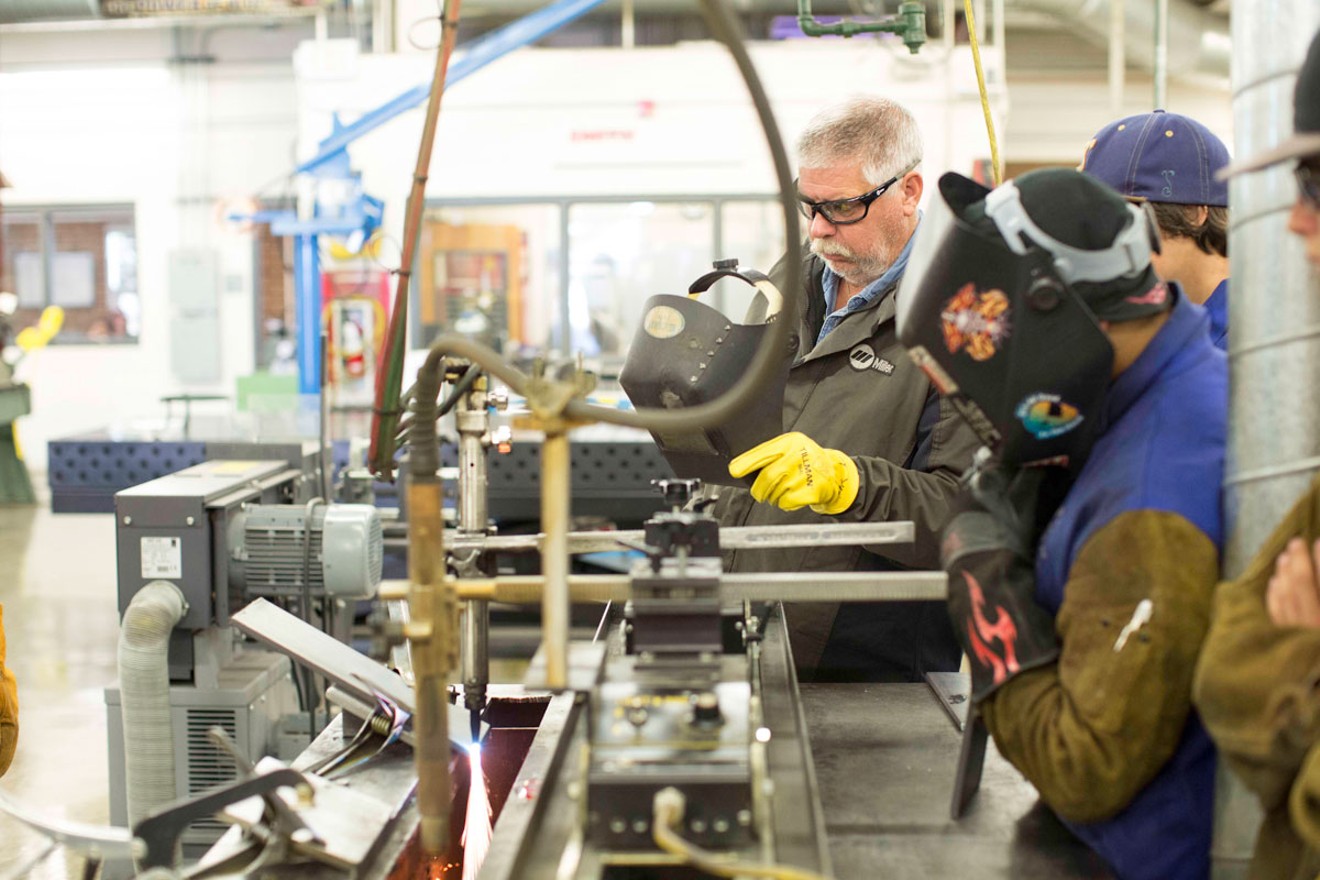After Colorado legislators passed House Bill 15-1170, which changed the measurement for high school success to include any post-secondary schooling, districts around the state began laying the groundwork to make big changes. Many are now shifting from a college-preparation model to a career-preparation model, asking individual students what they’d eventually like to do and then tailoring their courseloads to those goals. “There’s been a lot of support the last year and a half around having the career conversation first and then figuring out the post-secondary option that makes the most sense,” says Sarah Heath, the head of career and technical education, or CTE, for the state.
This means taking a fresh look at CTE programs, which have the potential to provide meaningful access to career-specific education. “This is not your grandfather’s CTE,” says Priscilla Straughn, chief academic officer at the Adams 12 school district in Adams County. “It’s not just an option for kids not going to college. It’s about creating pathways for our students to become productive students in the communities that we live in and serve. We want them to be prepared for the next phase of their lives, whether that’s the military, four-year college, two-year college, an industry certification or going directly into the workforce.”
Jefferson County Public Schools started ramping up its CTE programs years ago, and today its robust network serves as a model in the region. But many other districts in Colorado are just beginning to revitalize their CTE curricula, and some are taking an innovative approach to making changes — by engaging employers and community members in the conversation from the start.
Adams 12 recently passed a bond to expand its CTE programming, with funding to build a new technical high school and renovate Bollman Tech, which currently houses programs like auto technology and carpentry. To plot that expansion, the district turned to the community for what school board president Kathy Plomer calls a “grassroots information-gathering process.”
“Instead of making the assumption that as educators we know what’s best, we decided to do our due diligence from multiple entry points and look at all of the research that’s out there as we think about jobs and forecasting,” explains Straughn. “We looked at the outlook for careers and education, Colorado’s top list of jobs, Adams County’s projections and highest-ranked industries. We looked at trends and patterns to say, here are the jobs where we’re going to see tremendous increases. We asked, how does that align with current programming? It led us to gather further info for programming we don’t offer.”
And that led to a conversation with business leaders in the community. “We did a series of focus groups this summer with different industry partners,” Plomer says, “and asked, what trends are you seeing? What are the needs?”
To make changes without the help of local business leaders would be pointless, according to Straughn. “Making a decision of this magnitude without the desires of our industry partners would be shortsighted,” she says. “The companies that reside within Adams 12 are clear on what some of the skills and attributes they need as employees walk in the door.”
And by engaging the community, she hopes to find new educators: “[The panels] not only determine our programming and specific curriculum, but also create a teacher pipeline,” she adds.
The district is just beginning to evaluate the information gathered from those efforts, and the takeaways will inform not just what classes the district will add, but also the skills that students will learn in those programs. Straughn emphasizes that the aim is to instill flexibility that will prepare kids for a constantly evolving workforce: “We need to better meet the needs of the student currently in the system as well as those who aren’t in the system,” she says. “The question is, how do we create a dynamic system that can adapt over time to meet the needs of the community that we serve?”
This effort will benefit Adams 12’s entire high school population, Plomer says: “Everyone needs to be career- and college-ready.”
[
{
"name": "Air - MediumRectangle - Inline Content - Mobile Display Size",
"component": "12017618",
"insertPoint": "2",
"requiredCountToDisplay": "2"
},{
"name": "Editor Picks",
"component": "17242653",
"insertPoint": "4",
"requiredCountToDisplay": "1"
},{
"name": "Inline Links",
"component": "18838239",
"insertPoint": "8th",
"startingPoint": 8,
"requiredCountToDisplay": "7",
"maxInsertions": 25
},{
"name": "Air - MediumRectangle - Combo - Inline Content",
"component": "17261320",
"insertPoint": "8th",
"startingPoint": 8,
"requiredCountToDisplay": "7",
"maxInsertions": 25
},{
"name": "Inline Links",
"component": "18838239",
"insertPoint": "8th",
"startingPoint": 12,
"requiredCountToDisplay": "11",
"maxInsertions": 25
},{
"name": "Air - Leaderboard Tower - Combo - Inline Content",
"component": "17261321",
"insertPoint": "8th",
"startingPoint": 12,
"requiredCountToDisplay": "11",
"maxInsertions": 25
}
]












